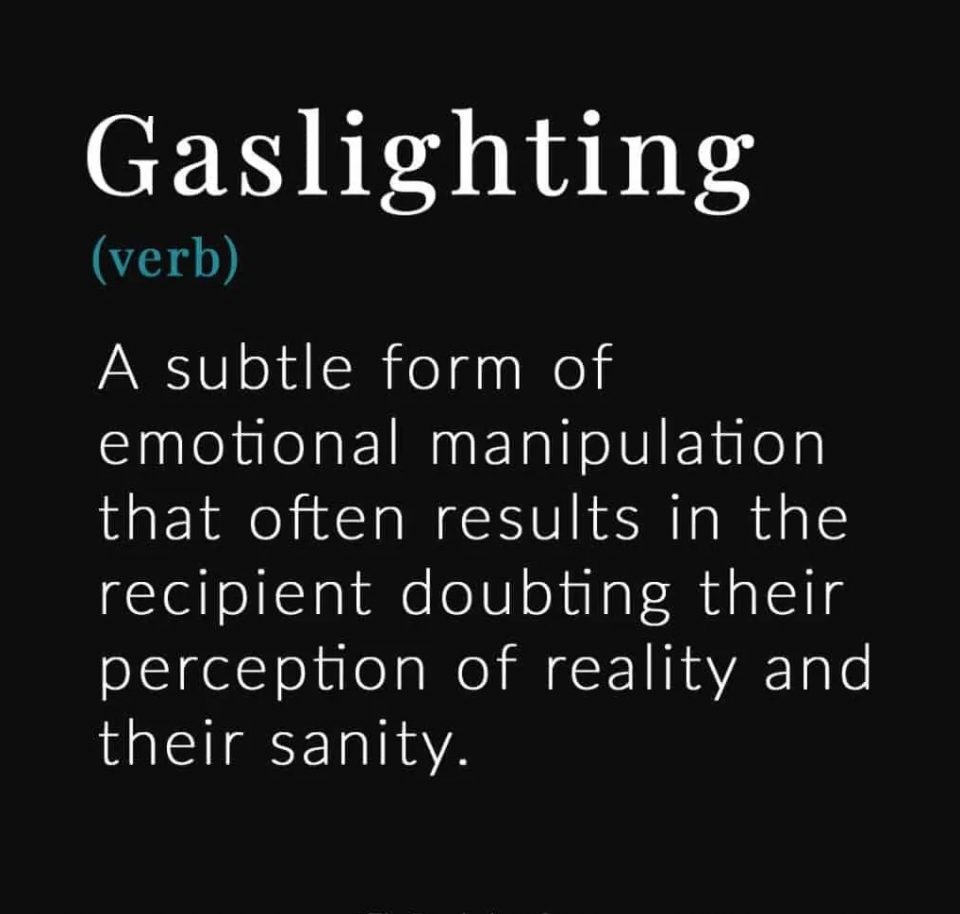Understanding, Recognizing, and Overcoming Manipulation
Introduction:
Gaslighting is a psychological manipulation tactic that has the potential to wreak havoc on individuals and communities alike. It’s a term that’s gaining recognition, but its insidious nature often goes unnoticed, leaving victims doubting their own reality and feeling isolated. In this article, we will delve deep into gaslighting, examining its definition, its profound psychological impact, and strategies for both recognition and resilience.
Defining Gaslighting:
Gaslighting is a form of psychological manipulation that seeks to make the victim doubt their own thoughts, feelings, or reality. It involves a range of tactics employed by the gas lighter, such as denial, trivialization, blame-shifting, and outright deception. The goal of gaslighting is to exert control and power over the victim.
The Psychological Toll of Gaslighting:
Gaslighting is not just a minor annoyance; it carries a profound psychological toll. Victims of gaslighting often experience self-doubt, anxiety, depression, and a diminished sense of self-worth.
Recognizing Gaslighting:
Recognizing gaslighting is the first step toward addressing and countering its harmful effects. Here are some key strategies for recognizing gaslighting:
Educate Yourself: Learning about gaslighting and its tactics is crucial. Understanding how it works empowers individuals to recognize it when it occurs.
Trust Your Feelings: Trust your instincts and emotions. If something doesn’t feel right or if you’re being made to doubt yourself, take it seriously.
Document Incidents: Keeping a record of gaslighting incidents can be invaluable. It serves as evidence if you need to address the issue formally or seek professional help.
Seek Support: Reach out to friends, family, or support groups. Sharing your experiences with trusted individuals can help validate your feelings and provide emotional support.

Examples of Gaslighting:
Gaslighting can manifest in various aspects of life, including child-parent relationships, spousal dynamics, medical encounters, and on an institutional level. Let’s explore three real-life examples of gaslighting in these contexts:
Child-Parent Relationship:
Imagine a bright young child in New Orleans with dreams of success beyond their current circumstances. However, their parent, fearing disappointment, keeps telling them they’re “aiming too high” or “being unrealistic.” This constant negativity can make the child doubt their abilities and put a damper on their potential.
Spousal Relationship:
In a marriage, gaslighting can happen when one partner dismisses the other’s concerns about racism, saying they’re “making a big deal out of nothing” and “too sensitive.” This can make the person feel like their experiences don’t matter, leaving them feeling alone and unheard.
Medical Provider-Patient Interaction:
Gaslighting in healthcare can be particularly dangerous. Imagine an African American patient in New Orleans seeking help for symptoms they know are serious, but their doctor brushes it off as “all in their head.” When the real issue is finally found, it’s often too late. This not only endangers the patient’s health but also shatters their trust in the healthcare system.
Institutional Gaslighting:
On a broader scale, institutional gaslighting occurs when policies, practices, and media representations deny or downplay systemic racism. For instance, when city officials pretend there are no racial disparities in areas like education or criminal justice, it’s like telling our community, “You’re imagining things.” This makes it challenging to address systemic issues effectively.
RELATED: 4 Way to Deal With Manipulative People
Strategies for Managing Gaslighting:
Managing the harmful effects of gaslighting and building resilience are essential steps toward healing. Here are some strategies for managing gaslighting:
Set Boundaries: Establish clear boundaries with people who engage in gaslighting behaviors. Let them know that their actions are not acceptable.
Therapy and Counseling: Consider seeking therapy or counseling to help process the emotional toll of gaslighting and develop coping strategies.
Trust Your Feelings: Believe in your feelings and experiences. Trust your instincts. Don’t let anyone invalidate your emotions.
Community Empowerment: Engage with community initiatives and organizations that promote mental health awareness and resilience. Collective support can be powerful.
Recognize the Signs: The first step is awareness. Understand what gaslighting looks like. Recognize when someone is undermining your experiences or making you doubt yourself.
Document Incidents: Keep a record of gaslighting incidents. This can be helpful if you ever need to address the issue formally or seek professional help.
Conclusion:
Gaslighting is a pervasive issue that affects individuals and communities. Recognizing gaslighting, trusting your feelings, seeking support, and setting boundaries are essential steps in managing its harmful effects. Awareness and resilience are our tools in breaking free from this harmful cycle and building a stronger, more compassionate community right here in New Orleans. By fostering open conversations, seeking support, and challenging these manipulative behaviors, individuals and communities can begin to heal and reclaim their sense of self-worth. Awareness is the first step in dismantling the gaslighting narrative and striving for a more equitable and empathetic society.

